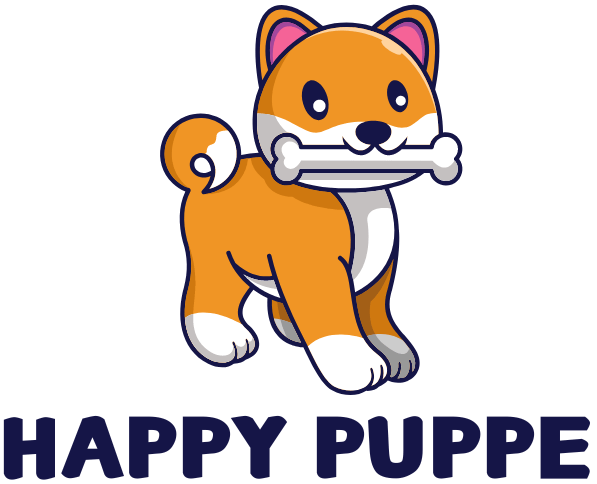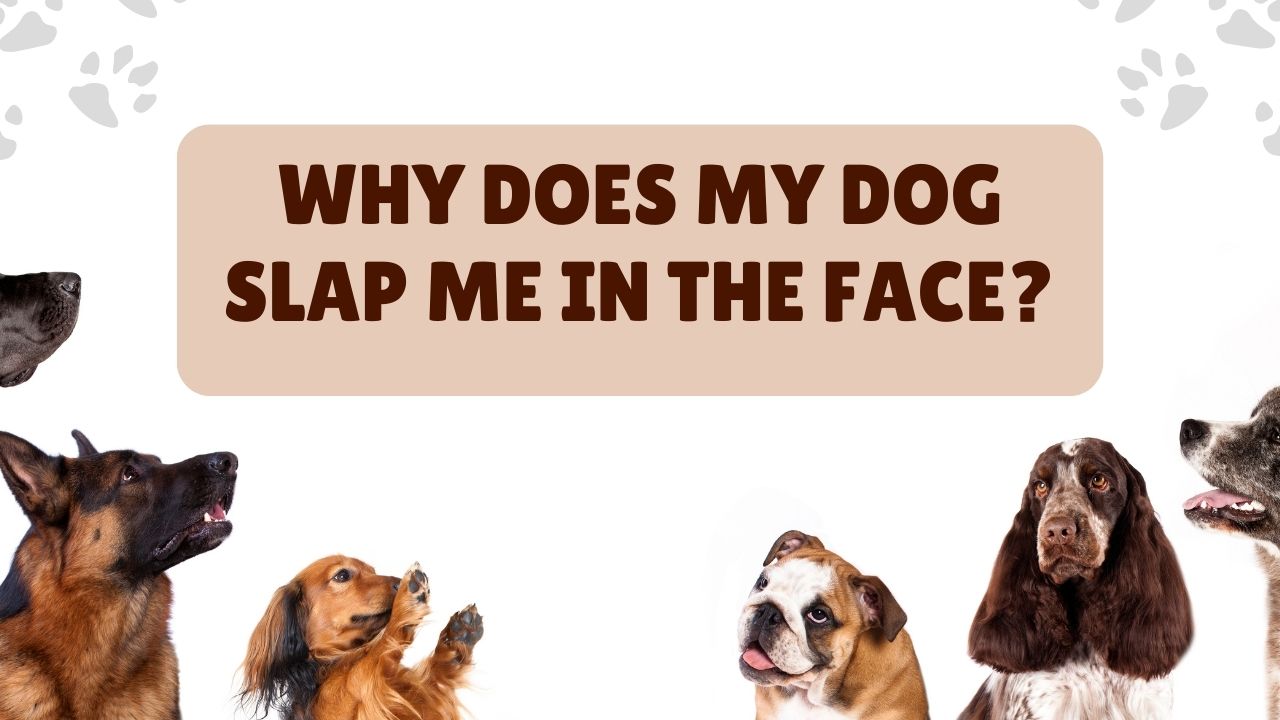Dogs may slap their owners with their paws for various reasons, such as seeking attention, playfulness, asserting dominance, or frustration. Some other reasons a dog may slap its owner with its paw include seeking food or treats, reacting to environmental stimuli, or attempting to communicate discomfort or pain. If your dog’s behaviour is persistent or causing harm, consider seeking the advice of a professional dog trainer or behaviourist.
Do dogs slap you to protect you?
Dogs do not playfully slap or swipe at their owners to protect them. Suppose a dog is displaying aggressive behaviour towards its owner or anyone else. It may be due to fear, anxiety, territorial behaviour, dominance, or a lack of proper socialization and training. It’s essential to seek the help of a professional dog behaviourist or trainer to address any aggressive behaviour and ensure the dog’s and its owner’s safety.
Is it normal for my dog to hit me?
No, it’s not normal for a dog to hit or be aggressive towards their owner or anyone else. If your dog is displaying aggressive behaviour, it’s essential to seek the help of a professional dog behaviourist or trainer to address the issue and keep everyone safe.
What Are the Causes of a Dog Slapping You in the Face?
- Seeking attention or affection
- Playfulness or excitement
- Asserting dominance or control
- Frustration or irritability
- Seeking food or treats
- Reacting to stimuli in the environment
- Communicating discomfort, stress, or pain.
Attention seeking – Slapping with paws can be a way for a dog to get its owner’s attention, especially if it feels ignored or lonely.
Playfulness – Slapping may be a playful gesture when a dog is excited or wants to initiate playtime with its owner.
Dominance – Some dogs may use paw slaps to assert dominance or control over their owners, especially when they feel uncertain or threatened.
Frustration – Dogs may slap their owners with their paws if they feel frustrated, such as when they want to play but are being restrained or denied access to something they desire.
Food or treat-seeking – Dogs may use paw slaps to indicate they want food or treats, specifically if they are hungry or have learned that this behaviour results in getting what they want.
Reacting to stimuli – Dogs may slap their owners with their paws to react to stimuli in their environment. Such as sudden noises or movements.
Discomfort or pain – Dogs may slap their owners with their paws to communicate discomfort or pain, especially if they are experiencing physical discomfort or injury. If this is the case, it’s essential to seek veterinary care.
How do I show my dog dominance?
Establishing dominance over a dog is not recommended as a training approach as it can lead to fear, anxiety, and aggression in dogs. Establishing a relationship based on trust, respect, and positive reinforcement is essential. This can be achieved through clear and consistent communication, rules and boundaries, and rewarding good behaviour. Training exercises such as obedience training, agility, and socialization can also help build a positive relationship and improve behaviour. It’s important to remember that dogs are social animals that thrive on positive interactions and transparent leadership rather than fear-based dominance.
Do dogs know when they hurt you?
Dogs may or may not understand that their actions have caused physical pain to their owner. However, they can sense their owner’s distress and react accordingly. Dogs are highly attuned to their owner’s emotions and can pick up on cues such as body language, tone of voice, and scent. Suppose a dog senses that its behaviour is causing its owner distress. In that case, it may display submissive or nervous behaviours, such as avoiding eye contact, tucking its tail, or licking its lips. It’s essential to address aggressive or painful behaviour with a professional dog behaviourist or trainer to ensure the dog’s and its owner’s well-being.
Should I hit my dog if he attacks me?
No, hitting your dog is not a recommended solution if it is exhibiting aggressive behaviour. Hitting a dog can escalate the situation and cause fear, anxiety, and further aggression, making the behaviour worse in the long term. It’s essential to seek the help of a professional dog behaviourist or trainer to address aggressive behaviour and develop a positive reinforcement-based training plan that will promote a safe and happy relationship between you and your dog. Verbal cues and commands can be used to communicate with your dog in training and behaviour modification. However, yelling or shouting at your dog in an aggressive or threatening tone will not effectively address aggressive behaviour and can harm the bond between you and your dog. Instead, it’s best to use a calm and assertive tone, consistent commands, and positive reinforcement techniques to train and modify your dog’s behaviour.
Is it okay to lightly hit a dog?
No, hitting or physically punishing a dog for any reason is not acceptable. Physical punishment can cause fear, anxiety, and aggression and harm the dog’s and owner’s bond. It can also worsen behaviour problems and teach the dog to associate people or specific situations with fear or pain. Positive reinforcement-based training methods that reward good behaviour are more effective and humane. Suppose you are experiencing behavioural issues with your dog. It’s best to seek the help of a professional dog behaviourist or trainer to develop a training plan tailored to your dog’s needs.
What can I do to prevent my dog from slapping me?
To stop dog slapping:
- Reinforce positive behaviour.
- Ignore slapping.
- Redirect to alternative behaviour.
- Manage triggers.
- Provide mental & physical stimulation.
- Seek professional help.
- Check for medical causes.
If your pet doesn’t stop slapping you in the face, you shouldn’t resort to shouting at them because this can cause anxiety in dogs; ultimately, it will worsen matters. As a concerned pet owner, meet your dog’s emotional and physical needs.
Here are some ways to get your dog to stop slapping you
- Reinforce positive behaviour – Reward your dog with treats, praise, or attention when it is not slapping you.
- Ignore the behaviour – Ignoring your dog’s slapping can help reduce the reinforcement it receives from you. Refrain from engaging with your dog when it slaps you, and avoid making eye contact or speaking to it.
- Redirect the behaviour – Teaching your dog alternative, acceptable behaviour to replace the slapping can be an effective solution. You can teach it to fetch a toy, sit, or lie down on command. Reinforcing these behaviours with treats or praise will encourage your dog to focus on them instead of slapping.
- Manage triggers – Understanding the triggers that cause your dog to slap you is essential in addressing the behaviour. Common triggers include high levels of excitement, frustration, or boredom. Remove or manage these triggers, such as providing more exercise or mental stimulation, to help reduce the likelihood of slapping behaviour.
- Provide mental and physical stimulation – Regular exercise and mental stimulation are essential in preventing boredom and frustration. Which can lead to unwanted behaviours like slapping. Ensure your dog gets enough physical and mental stimulation through walks, playtime, and training.
- Seek professional help – If your dog’s slapping behaviour is persistent or causing harm, seeking the advice of a professional dog trainer or behaviourist can be helpful. They can assess the behaviour, provide guidance on how to address it, and work with you to develop a customized training plan.
- Check for medical causes – If your dog slaps due to pain or discomfort, it’s essential to rule out any underlying medical issues. Consult a veterinarian to ensure no health problems are causing the behaviour.
Conclusion
It is essential to treat dogs with kindness, respect, and positive reinforcement. Hitting or physically punishing a dog is not a recommended training method. It can cause fear, anxiety, aggression and damage—the bond between the dog and its owner. Dogs have long-lasting memories and can associate individuals who have physically punished them with fear or anxiety. Positive reinforcement-based training methods that reward good behaviour are more effective and promote happiness—a trusting relationship between the dog and its owner. Suppose you are experiencing behavioural issues with your dog. It’s best to seek the help of a professional dog behaviourist or trainer to ensure the dog’s and its owner’s well-being.
FAQ
Why does my dog punch me in the face?
Dogs do not have the intention to “punch”, but if your dog is displaying aggressive behaviour towards you, such as nipping, biting, or jumping on you, it may indicate dominance, fear, possessiveness, or discomfort. Consulting with a professional dog behaviourist can help determine the root cause and provide a solution.

Why does my dog paw my face?
Dogs use their paws to communicate and express themselves in various ways. Pawing at your face could mean several things, such as seeking attention, affection, demanding something (e.g. food), or showing playfulness.
What signs show that your dog loves you?
Dogs express their affection in various ways. Some signs that your dog loves you include:
- Wagging their tail
- Bringing you toys or other items
- Following you around
- Licking or nuzzling you
- Leaning or resting on you
- Perking up or becoming excited when they see you
- Displaying simple body language around you It’s important to remember that every dog is unique and may display affection differently.
Do dogs remember you hitting them?
Yes, dogs have memories and are capable of remembering experiences, both positive and negative. The person who delivered physical punishment may cause the dog to associate it with them and feel fear or avoidance. Physical punishment is not an effective or humane way to train a dog and can have long-lasting negative impacts on its behaviour and relationship with you. Rewarding desirable behaviours through positive reinforcement training is a more effective and humane way to train a dog.

Meet Slick Johnson, an author who has a passion for dogs and a dog blog site to prove it. Slick has been a dog lover since childhood and has always been fascinated by their behavior, loyalty, and intelligence
After completing his studies in journalism, Slick decided to combine his two passions – writing and dogs. He started his own blog site, dedicated to all things canine, and has been writing about dogs ever since.
Through his writing and advocacy, Slick has become a respected voice in the dog community. His passion for dogs shines through in every word he writes, and his love for these loyal companions has inspired countless others to become responsible dog owners.

